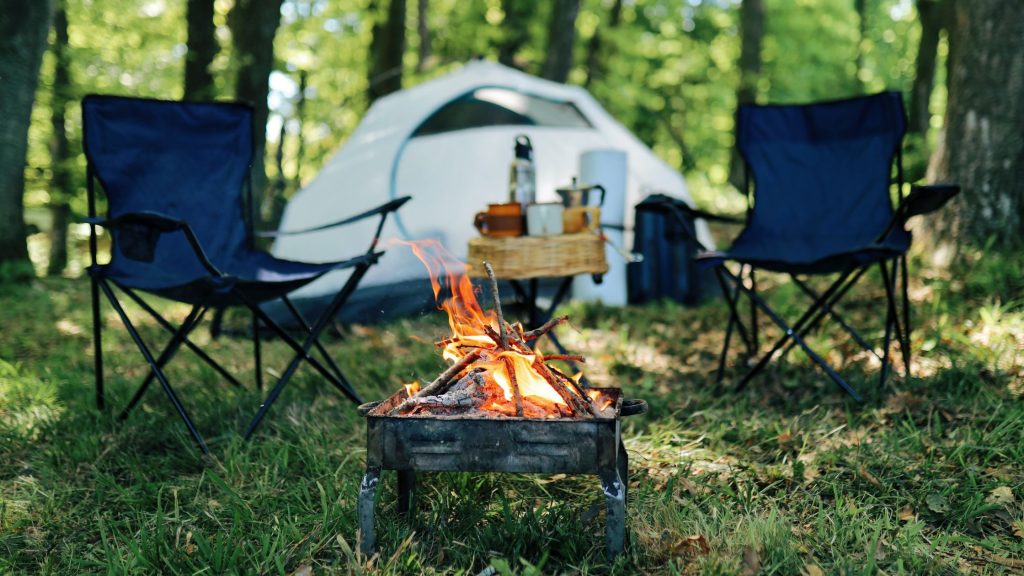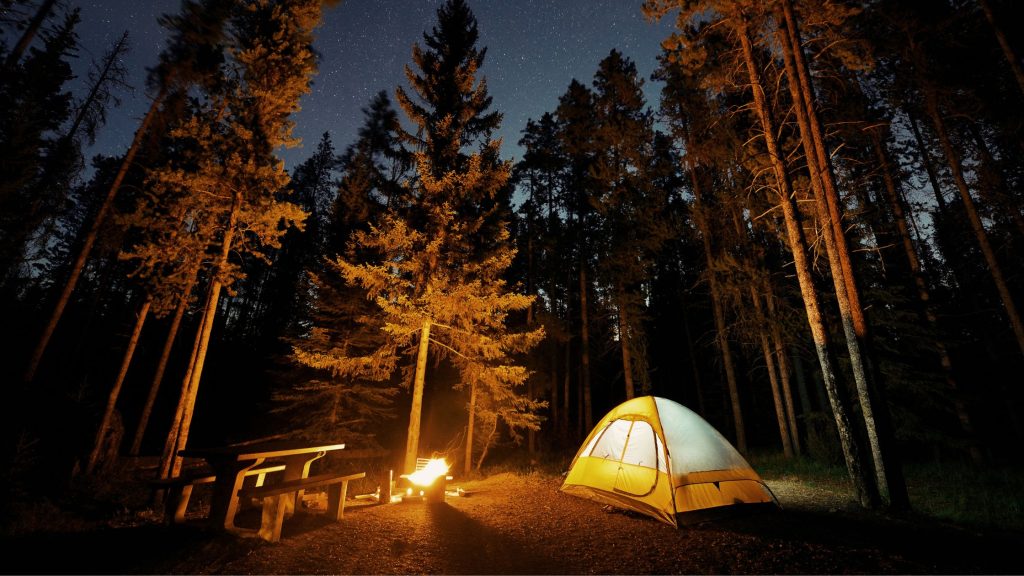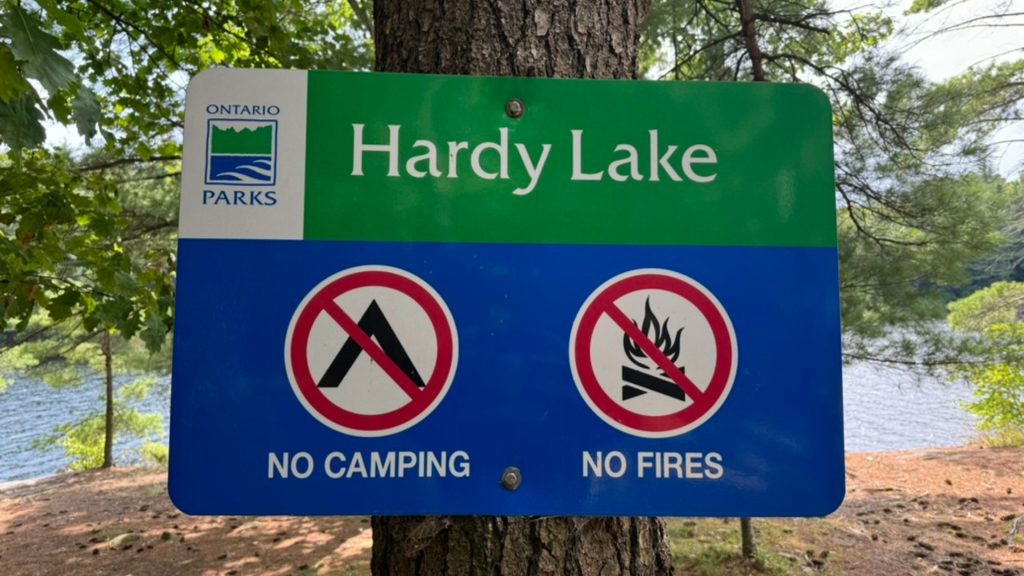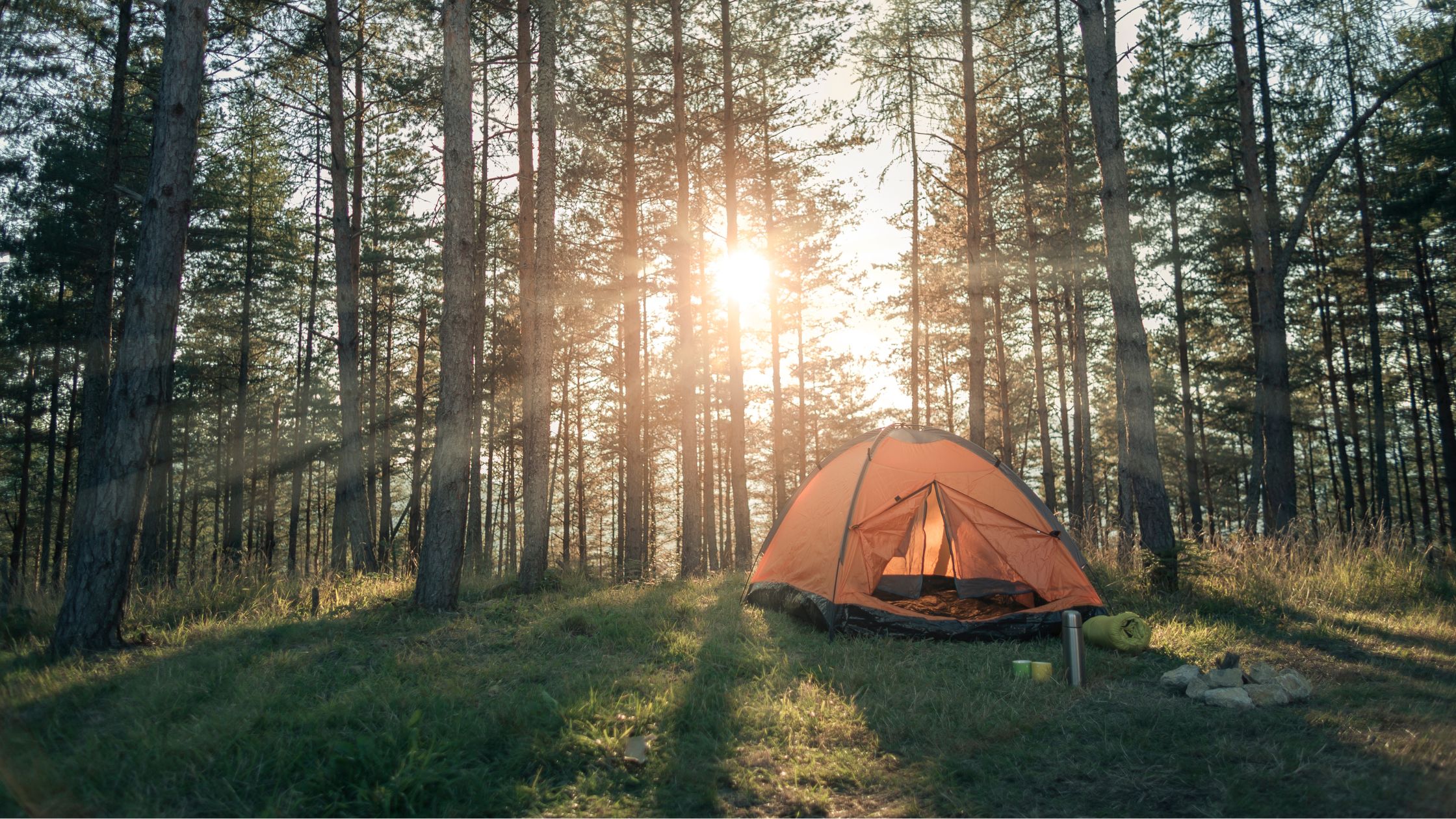What is Dispersed Camping?
Dispersed camping is a type of camping that takes you well beyond designated campgrounds and into raw, untamed nature. Instead of pitching your tent at a managed site with restrooms and picnic tables, you’re stepping into the wild — parking or hiking onto public lands, often overseen by agencies like the U.S. Forest Service or Bureau of Land Management (BLM), and setting up camp where there’s no infrastructure at all.
It’s a minimalist’s dream: no fees, no neighbors, no reservations. Just you, your gear, and miles of quiet forest, desert plateau, or lakeshore. Want to camp on a bluff overlooking Lake Powell or near a hidden creek in Colorado’s San Juan Mountains? Dispersed camping makes that possible.
But with that freedom comes responsibility. There are no trash bins, so you pack everything out. No toilets, so you learn Leave No Trace bathroom etiquette. No fire rings, so you build your fires carefully — or not at all if there are fire bans.
Why Everyone’s Talking About Dispersed Camping

Picture yourself waking up to the sounds of birdsong instead of pings, trading fluorescent office lights for the glow of a sunrise filtered through pine needles.
Across North America—and especially around our favorite lakes—the appetite for unplugged no‑Wi‑Fi camping is booming. According to the 2025 North American Outdoor Report, bookings at “dispersed” (free‑range) sites rose 37 percent last year. Why? Because you, like so many of us, crave real silence, star‑bright skies, and the thrill of relying on your skills.
This guide pulls everything together in one place: location scouting, gear, waterfalls, primitive‑camp know‑how, week‑long itineraries, safety essentials, and step‑by‑step mapping.
Whether this is your first foray beyond designated campgrounds or you’re a seasoned backcountry nomad eager for fresh intel, we’ll walk every mile together—then point you back to Lake.com for cabins or gear rentals when you want to level up in comfort.
Choosing the Perfect Campsite

Where Should I Camp for the Ultimate Nature Experience?
Understand Your Ecosystems. Each landscape offers a different rhythm:
- Lakefront coves promise calm mornings for paddle boarding and natural white‑noise nights.
- Riverside benches deliver cooler temps and endless fly‑fishing potential—but also require flood awareness.
- Mountain saddles offer jaw-dropping panoramas and cooler evenings, perfect for summer heat escapes.
- Forest meadows wrap you in birdsong and shade while shielding you from high winds.
- High-desert mesas open the entire sky for astronomy, but they demand strict water logistics.
Designated vs. Dispersed.
Designated campgrounds offer numbered pads, vault toilets, and maybe a neighbor’s guitar at 11 p.m. Dispersed camping (also called “free camping” or “boondocking”) means first‑come, first‑served spaces on Bureau of Land Management (BLM) or U.S. Forest Service (USFS) land—no facilities, no fees.
Quick Tip: Check the specific forest’s Motor Vehicle Use Map (MVUM) for legal pull‑outs before you arrive.
Spotlight Sites
- Henderson, NV Corridor – Drive 45 minutes east toward Lake Mead National Recreation Area. The Government Wash and Stewart’s Point Fingers offer level ground, blazing red‑rock vistas, and zero nightly cost (14‑day limit).
- Park City, UT High Country – Venture north on the Mirror Lake Highway. Dispersed turnouts between mile markers 12–18 put you within striking distance of alpine lakes, with aspen groves shielding camps from the summer sun.
Find Your Patch with Digital Scouting.
Apps like Gaia GPS, on X Backcountry, FreeRoam, and iOverlander overlay public-land boundaries, water sources, and slope angles. Cross‑reference with USGS 7.5‑minute quadrangle maps for topo detail, then download offline tiles so you’re never caught without a signal.
Waterfalls, Rivers & Hidden Gems
Can I Camp Near Waterfalls and Flowing Rivers?
Absolutely—nothing beats drift‑off sessions to thunderous spray—but you’ll need a strategy. Set your tent at least 200 feet from any water line. This protects fragile riparian habitat and prevents surprise flash floods from flooding your vestibule.
Leave‑No‑Trace (LNT) Water Wisdom
- Camp on durable surfaces—such as gravel bars, rock slabs, or compacted sand.
- Wash dishes 200 feet away, using biodegradable soap sparingly.
- Store food canisters upwind; waterways double as wildlife highways.
Finding Cascade‑Friendly Sites
- Use AllTrails filters for “waterfall” and “camping” tags—then vet distances.
- Grab National Forest visitor maps; many mark named falls, as well as spur trails.
- Ask rangers: they know secret pools that never hit Instagram.
Regions That Deliver
- Pacific Northwest – Oregon’s Mount Hood National Forest hides secluded pads beneath Tamanawas Falls.
- Appalachian Highlands – Along the Blue Ridge Parkway, Graveyard Fields combines rhododendron tunnels with two swim‑worthy falls.
- Ozark Plateau, AR/MO – The Buffalo National River area pairs sandstone bluffs with year‑round cascades like Lost Valley’s Eden Falls.
Why It Matters: Moving water = infinite drinking supply once filtered, cooler ambient temps, and natural “white noise” that lulls you to sleep.
Setting Up Camp the Right Way
How Do I Find and Set Up the Ideal Campsite?
Five‑Point Site Checklist
1. Flat, well‑drained ground—no bumpy roots or “bathtub” basins.
2. Natural windbreak—large boulders, tree stands, or canyon walls.
3. Sufficient tree spacing—12–18 feet if you’re stringing a tarp or hammock.
4. Early‑morning sunlight—helps dry dew‑damp gear.
5. Safe distance from hazards—dead branches (“widow‑makers”) or avalanche chutes.
Building a Rock‑Solid Fire Ring
Excavate to mineral soil. Ring with cantaloupe‑sized stones; keep opening toward the prevailing breeze for a clean burn. Fill a 2‑gallon dromedary bag before striking the first spark—your instant fire extinguisher.
Bear‑Proofing in Three Moves
- Cook, sleep, and stash gear in a triangle: 100 feet between each point.
- Suspend food canisters 12 feet high and 6 feet out from trunk (PCT hang).
- In grizzly country, pack a bear‑resistant cooler certified by the Interagency Grizzly Bear Committee (IGBC).
Illustrated Checklist: Download our printable PDF inside the Lake.com Gear Vault for a step‑by‑step diagram.
Rustic vs. Primitive Camping
What’s the Difference Between Rustic and Primitive Camping?
- Rustic Camping = minimal services: pit toilet, maybe a hand pump. You’ll still find numbered sites and a neighbor’s camp lantern.
- Primitive Camping = no amenities, no signage, and often no cell service. You provide 100 percent of the infrastructure—and pack it all out.
Skills You’ll Want
Reading the sky for approaching pressure systems; plot and compass for those moments your phone dies; improvised shelter craft in case gusts flatten your standard tent.
Mental Prep
Primitive nights are darker, quieter, and sometimes isolating. Embrace it. Keep a nightly journal or voice memo to ground yourself. “Think of solitude as a muscle,” says Montana-based guide Avery Linville. “The more you work it, the stronger your sense of calm becomes.”
Must‑Have Gear for Going Off‑Grid
- Gravity water filter or Sawyer Squeeze (1 liter/minute rate)
- Ferro rod + Tinder‑Quik tabs (works wet, unlike matches)
- Garmin inReach Mini2 satellite communicator (SOS + weather text)
Planning a Week‑Long Rustic Camping Trip
What Should a Full Week of Backcountry Camping Look Like?
Below is a flexible seven-day template that you can riff on anywhere, from the Smokies to the Sierra Nevada.
| Day | Morning | Afternoon | Evening |
|---|---|---|---|
| 1 | Arrive/establish base camp | Short loop hike to calibrate bearings | Chill by lake, map review |
| 2 | Summit nearby peak | Cliff‑side picnic | Astronomy 101 under new moon |
| 3 | Waterfall trek & swim | Sketch/journal session | Dutch‑oven camp‑pizza night |
| 4 | Rest morning, hammock reads | Kayak/fish if water nearby | Wilderness first‑aid drills |
| 5 | 8‑mile ridge hike | Foraging basics (identify berries) | Story circle + hot cocoa |
| 6 | Sunrise photography | Pack‑raft float (if river system) | Gear mend and camp spa (foot soak) |
| 7 | Break camp, micro‑trash sweep | Celebrate with roadside diner breakfast | Head home rejuvenated |
Meal Planning Snapshot
Breakfast: instant oatmeal jazzed up with dried cherries and maple sugar.
Lunch: tortillas, shelf‑stable cheese, salami.
Dinner: dehydrated chili topped with Fritos for crunch.
Energy‑Saving Tips
Alternate strenuous days with lighter ones; plan “zero‑move” lunches near water to cool your core temperature; stretch your calves nightly to avoid next-day aches.
Staying Safe in the Wild

How Can I Camp Safely, Especially in the Summer?
Beat the Heat
- Pitch in afternoon shade; orient the door away from low-angle morning sun for natural alarm-clock warmth.
- Soak a cotton neck gaiter; body temp drops as water evaporates.
Water Safety
- Treat every source (stream, lake, even high‑alpine snowmelt) to dodge Giardia.
- Cross rivers at the widest point, unbuckle the hip belt so you can ditch the pack if swept downstream.
Fire & Smoke Management
Check daily “fire danger” boards or use InciWeb before igniting any flame. When winds exceed 15 mph, opt for a cold dinner instead.
First‑Aid Must‑Haves
- 4” roller gauze & SAM splint
- Antihistamine tabs for bee stings
- Electrolyte packets for heat stress
- Tweezers and tick key
Comms Backup
Cell towers desert you? A personal locator beacon (PLB) sends a 406 MHz distress to search‑and‑rescue within minutes. Rental units cost around $10 per day at many REI outposts.
Navigation Tools & Mapping Your Trip
Where Can I Find Maps for All the Best Campsites?
Resource Round‑Up
- USFS Interactive Visitor Map – color‑codes dispersed zones, motorized routes, and closure orders.
- Gaia GPS – premium layer “Public Land” highlights BLM and state trust parcels.
- AllTrails Pro – offline waterfall trail maps + community reviews.
- Nat Geo Trails Illustrated – tear‑resistant paper maps for enduring rain squalls.
Layer Like a Pro
Download two digital base maps (satellite + topo) plus one waterproof paper copy. Mark waypoints: water sources, trailheads, and bailout roads. Snap geo‑tagged photos of intersections; if the phone dies, those visual breadcrumbs remain on your camera roll.
DIY Henderson & Park City Map Links
We’ve pre‑loaded KML files with our favorite Nevada lake coves and Utah alpine loops. Grab them free inside the Lake.com Adventure Library and upload them straight into Gaia or Google Earth.
Choose Your Adventure and Make It Your Own
Dispersed camping isn’t about conquering nature; it’s about meeting the wild on equal terms and letting the silence teach you something new. Before you shoulder the pack, run through this final five checklist:
- Weather check—72‑hour forecast and wildfire map
- Tell a friend—exact route + return time
- Gear test—pitch tent and spark stove at home
- Route redundancy—two nav devices, extra power bank
- Mindset—expect a challenge, welcome discovery
From shimmering lakefront sunrises to waterfall‑lullaby nights, the backcountry beckons. Grab a map, pack your kit, and let the forest welcome you home. When you’re ready for a soft bed, the nearest marina or a local outdoor event, you know where to click—Lake.com has your back.







